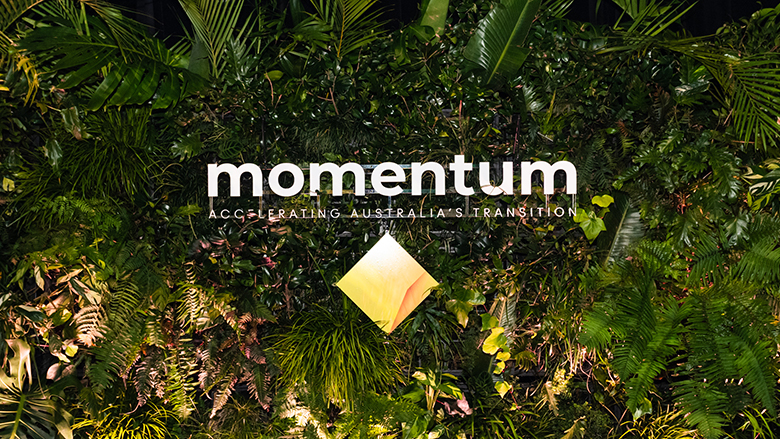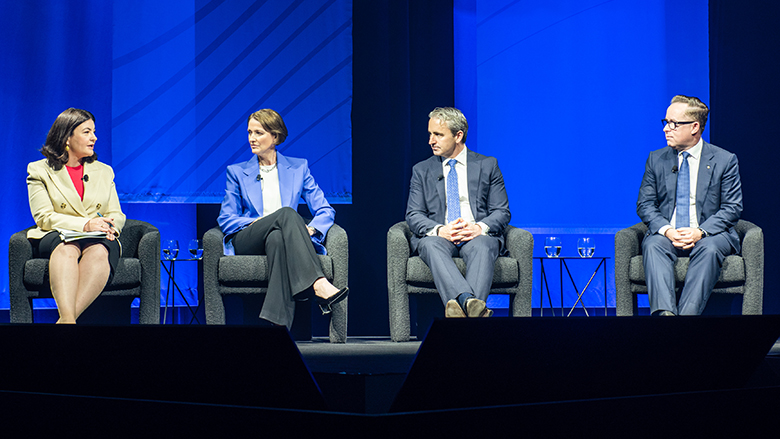Commonwealth Bank of Australia’s (CBA) second sustainability conference, Momentum: Accelerating Australia’s Transition, brought together more than 700 attendees, 42 speakers and eight client exhibitors to discuss ideas and solutions that can help power the transition to a more sustainable future. Here are the 10 key takeaways from the event, compiled by CBA Newsroom:
1. Transition is massively complicated.
To stay on top of the latest science and technology, companies are relying on scientists – from physicists and mathematicians to biologists and engineers – to help guide an evidence-based transition plan to net zero carbon emissions. While coordination and knowledge-sharing across corporate Australia is increasing, the road ahead remains challenging.
2. Australia lags other developed economies, but has the potential to be a renewables leader
Australia is lagging the US and Europe in its transition to a sustainable economy, but the country has massive potential to become a leader in renewable energy. Australia’s landmass, abundant natural resources and world-leading technology can be leveraged to help the nation become a global leader in renewable energy and renewable solutions. Coupled with the ingenuity and competitive nature of its people, this is a recipe for Australia to keep punching above its weight.
3. Some sectors can be carbon neutral today, for others technological solutions seem decades away
While some agricultural producers can attain carbon neutrality today by following industry best-practice, the path ahead is more complicated for industries like aviation. Battery-powered planes are too heavy for long-haul flights while hydrogen-powered planes have other safety challenges. New green technology is required to fully replace jet engines.
4. The opportunity in waste
The circular economy is a massive savings opportunity for Australia, particularly as we live in a world of finite resources. Whether it’s processing single-use plastics into new packaging or diverting scrap steel from landfill into new applications, there is value in unlocking recycling opportunities.
5. Data is critical for transition
One of the biggest challenges facing many companies is understanding and measuring their carbon footprint and other sustainability metrics. Investing in this capability is critical, however, as good data ensures companies can reliably track and report on the progress of their sustainability journey for all stakeholders including investors.
6. A key role for First Nations people
First Nations people stand to play a key role in supporting the sustainability transition and their close connection with land and country offers unique insights that can help guide the way forward. Indigenous savannah burning – a traditional practice of controlled burning of bushland to pre-empt larger fires during dry season, is one example where Indigenous practices of land management can advance the national sustainability journey.
7. There’s no transition without mining
Supply security of key metals and minerals is paramount: without lithium, there’s no electric car, and without copper, lights will not turn on. As the world moves to radically ramp up renewable energy generation and replace combustion engines with batteries to electrify transportation and industry, demand for certain raw materials is set to skyrocket. Without investment in new mining supply, there’s a big risk that transition is delayed. Australia is well positioned to benefit given its huge natural resources of these materials.
8. Overcoming complexity in carbon markets
Carbon markets will play a critical role in achieving the “net” of net zero. Not all emissions can be eliminated by 2050, so the world needs a trusted, transparent and effective mechanism for offsetting any remaining emissions via sequestration. While today’s carbon markets are complex and opaque, engaging with the complexity can be worthwhile – as some conference participants have found they’re closer to carbon neutrality than they imagined.
9. Upcycling is the new building green
Developers are increasingly taking a holistic approach to considering the carbon emissions of construction – from the carbon footprint of producing construction materials and shipping them to site, to the end-of-life plans for buildings. The so-called embodied carbon approach focuses on reducing, re-using and recycling where possible in new buildings as well as refurbishment of existing properties, while making the day-to-day operations of these buildings more sustainable.
10. Looking beyond climate to nature.
While climate change has become mainstream, nature loss is far less recognised. It is becoming clear that there is a need to tackle biodiversity and climate change together, and not as two separate issues. This means greater coordination and collaboration between business and conservation, and the elevation of natural capital accounting to ensure benefits are made clear to all stakeholders.



